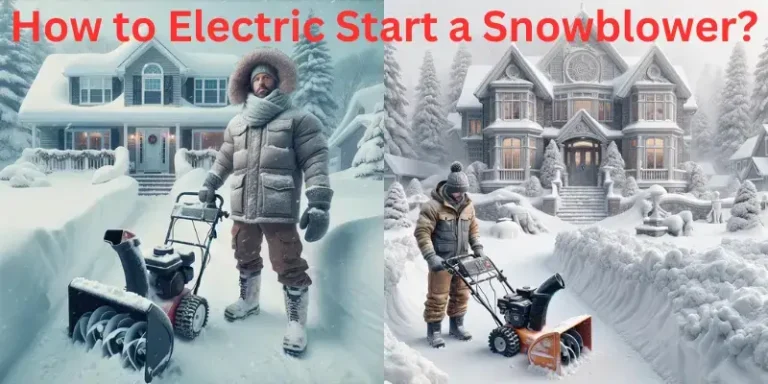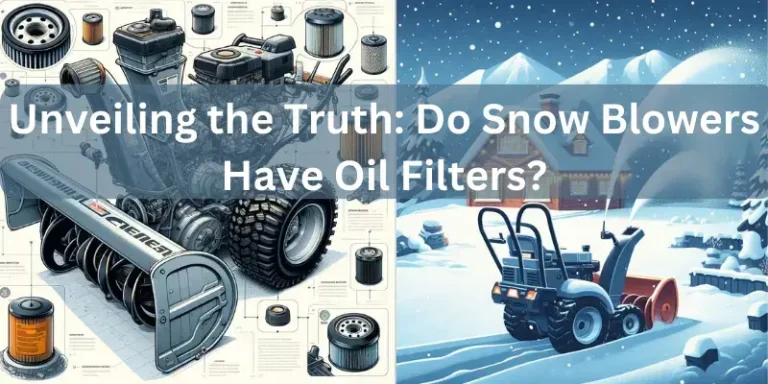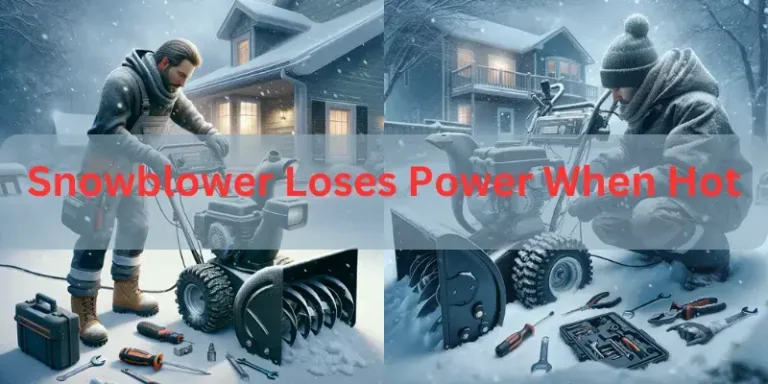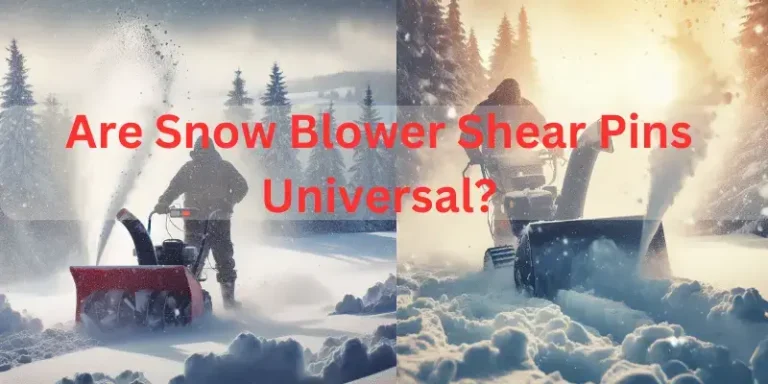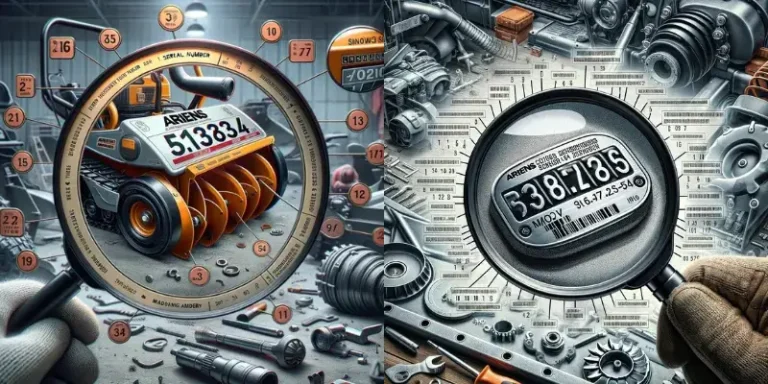Are Snow Blowers Hard to Push? (Why and What to Do in 2024)
As winter approaches, the challenge of snow removal becomes a key concern for many, and snow blowers are a primary tool for this task. In this article, I will address a common question: “Are snow blowers hard to push?” I aim to explore the intricacies of snow blowers, and the factors affecting their maneuverability, and offer solutions to prevalent issues.
The Immediate Answer
“Yes, snow blowers can be hard to push, especially the bigger ones without self-propelling features. But, it depends on the snow blower type, the area you’re using it in, and the snow itself. Next, I’ll show you how to pick the right snow blower and give tips to make snow clearing easier.”
How Snow Snow Blowers Works?
Understanding the mechanics of snow blowers is important for efficient use. Let me break down the different types and key parts:
Types of Snow Blowers:
Single-stage: Ideal for light snow and small areas. These are usually lighter and easier to handle.
Two-stage: Designed for moderate to heavy snowfall, offering more power and wider clearing paths.
Three-stage: The most powerful, suitable for heavy and wet snow, often used in large areas.
Key Parts of a Snow Blower:
Auger: The auger is the front part of the snow blower that rotates to scoop up the snow. In single-stage models, the auger cuts through the snow and propels it directly out of the chute. In two-stage and three-stage models, the auger’s job is to gather the snow and feed it to the impeller.
Impeller: Found in two-stage and three-stage snow blowers, the impeller is like a powerful fan behind the auger. Its role is to take the snow from the auger and forcefully eject it out of the chute, allowing the machine to clear larger quantities of snow more efficiently.
Drive System: This system is key to a snow blower’s mobility. In manual models, you’ll need to push the blower, while self-propelled systems do the hard work for you, moving the machine forward with minimal effort from the user. This feature is particularly beneficial in heavier models or when clearing snow from large areas.
Why Snow Blowers Can Be Hard to Push
Maneuvering a snow blower effectively can sometimes be challenging, and this primarily hinges on a few key factors:
Weight and Size:
Larger snow blowers, often designed for heavy-duty tasks, come with an added challenge: their weight. These models are typically heavier, making them more difficult to push, especially through thick or wet snow. The size also plays a role – larger snow blowers might be more cumbersome, particularly in tight spaces or when making turns.
Type of Drive System:
- The drive system of a snow blower significantly influences how much effort is required to operate it. Manual-drive systems rely entirely on your physical effort to move them forward. This can be tiring, especially during prolonged use or when clearing large areas.
- On the other hand, self-propelled systems have a drive mechanism that propels the snow blower forward, requiring less physical effort from you. These models are generally easier to handle, particularly for those who might struggle with the physical demands of a manual system.
Understanding these factors is vital in choosing the right snow blower for your needs and preparing for the effort involved in using it. Knowing what to expect can also help in planning snow removal, allowing for breaks if using a heavier model, or considering a self-propelled system for ease of use.
Common Problems That Make Snow Blowers Hard to Push
When using a snow blower, you might encounter a few issues that make pushing difficult. Understanding these common problems can help you quickly identify and address them, ensuring smoother operation. Some typical issues and their effect are:
Loose Blade:
Symptom: The snow blower is not removing snow as efficiently as it should.
Explanation: The blade, mandatory for scooping up snow, can become loose due to regular use. Over time, the nuts and bolts that hold the blade in place can wear out or loosen, resulting in a less effective snow removal process.
Damaged Friction Disc:
Symptom: You’re finding it hard to push the snow blower forward.
Explanation: The friction disc helps move the snow blower by transferring power from the engine to the wheels. Wear and tear from normal use, or damage caused by debris like stones or sticks can impair its functionality, making the snow blower tough to maneuver.
Debris Clogging the Wheels:
Symptom: The wheels are not turning smoothly or are getting stuck.
Explanation: Snow, ice, or other debris can accumulate around the wheels, obstructing their movement. This is common in areas with wet, sticky snow or if the snow blower is stored outside where it can collect debris.
Driver Lever Cable Too Loose:
Symptom: The machine feels difficult to control.
Explanation: This cable controls the engagement of the drive system. Over time, it can stretch or loosen, making it challenging to control the snow blower accurately. A loose cable can mean less responsive or sluggish movement.
Machine in the Wrong Gear:
Symptom: The speed of the snow blower doesn’t match the snow conditions.
Explanation: Just like a car, a snow blower has gears to adjust its speed. Using the wrong gear for the current snow conditions can make it harder to push. For instance, a higher gear in dense, heavy snow can strain the machine, while a lower gear in light snow can slow down the process.
By familiarizing yourself with these common issues, you can keep your snow blower running smoothly and make your snow-clearing tasks much easier.
How to Fix a Snow Blower That is Hard to Push
Dealing with a snow blower that’s difficult to push can be frustrating. Here are detailed steps to fix common problems:
Fixing a Loose Blade:
- First, ensure your safety by turning off the machine and disconnecting the spark plug wire to prevent accidental starts.
- Locate the blade on the front of the snow blower. You’ll need tools like a wrench or socket set for this task.
- Tighten any loose bolts or nuts securing the blade. If parts are excessively worn or damaged, consider replacing them.
Repairing a Damaged Friction Disc:
- Inspect the friction disc, which is usually located in the machine’s undercarriage. You may need to remove a panel or cover to access it.
- Check for signs of wear, such as cracks or smooth areas.
- If the disc is damaged, replace it with a new one that matches your model. This might involve loosening bolts and removing the old disc before positioning and securing the new one.
Clearing Debris from the Wheels:
- Manually clear any snow, ice, or debris built up around the wheels.
- Use a brush or scraper to remove compacted snow or ice, ensuring you don’t damage the wheels.
- Regular cleaning after use can prevent this issue.
Adjusting the Driver Lever Cable:
- Locate the adjustment mechanism for the driver lever cable, typically near the handle or under a panel.
- If the cable is too loose, tighten it by turning the adjustment nut or mechanism.
- Test the tension by engaging the drive lever. The snow blower should respond promptly without being too tight.
Selecting the Correct Gear:
- Refer to your snow blower’s user manual to understand the different gear settings. Each model may have specific recommendations.
- Choose a gear based on the snow condition. Use lower gears for heavy, wet snow and higher gears for lighter snow.
- Experiment with different settings to find what works best for your conditions.
By following these steps, you can solve the most common issues that make snow blowers hard to push, ensuring efficient and easier snow removal.
Maintenance Tips for Your Snow Blower
Regular maintenance is key to preventing problems and ensuring your snow blower is ready to handle the winter season. Here are some detailed tips:
Regular Checks and Tightening:
- Periodically, inspect all visible bolts and cables on your snow blower. Vibration from regular use can cause these components to loosen over time.
- Use appropriate tools, like wrenches or socket sets, to tighten any loose bolts. Be careful not to overtighten, as this can strip the threads.
- Check cables for any signs of wear or fraying. If they appear damaged, replace them to avoid unexpected failures.
Annual Maintenance Check:
- Before the onset of winter, perform a thorough check-up of your snow blower. This includes examining the auger, impeller, and drive system for any signs of damage or excessive wear.
- Change the engine oil, as old oil can lead to decreased efficiency and potential engine damage. Refer to your snow blower’s manual for the recommended oil type and replacement procedure.
- Check the spark plug for any deposits or corrosion. Replace it if necessary to ensure easy starting and optimal engine performance.
- Inspect the belts for cracks or fraying. Worn belts can break during operation, so replace them if they show signs of significant wear.
- Ensure the tires are properly inflated (for models with pneumatic tires) and the treads are in good condition for optimal traction.
End-of-Season Care:
- At the end of the winter season, it’s important to store your snow blower properly. Drain any remaining fuel or use a fuel stabilizer to prevent the gasoline from degrading and damaging the engine.
- Clean the machine thoroughly, removing any residual salt, dirt, or debris, as these can cause corrosion if leftover time.
- Store your snow blower in a dry, covered place to protect it from the elements and prevent rust.
- By following these maintenance tips, you can significantly extend the life of your snow blower and ensure it’s always ready for action when the snow starts to fall.
FREQUENTLY ASK QUESTIONS (FAQs)
Are snow blowers hard to push?
It depends on the type of snow blower. Some snow blowers are designed to be easier to push than others. For example, a single-stage snow blower is generally easier to maneuver and push compared to a two-stage snow blower, especially in lighter snow conditions.
How can I make it easier to move a snow blower?
You can make it easier to move a snow blower by keeping the tires properly inflated, ensuring the skid shoes are adjusted correctly, and using a proper technique when pushing the snow blower. Additionally, opting for a model with power steering can also make the task easier.
What are some solutions for pushing a snow blower through deep snow?
When dealing with deep snow, it can be helpful to start with a small area and gradually work your way through, rather than trying to push through a large amount of snow all at once. It’s also important to adjust the snow blower’s height to accommodate the depth of the snow.
Can I use a snow blower to tackle deep snow without exerting a lot of force?
While modern snow blowers are designed to handle deeper snow with less effort, the amount of force required can still vary depending on the depth and texture of the snow. Gas-powered snow blowers, for example, can provide more force to tackle deeper snow compared to electric models.
Are there any tips for pushing a snow blower through powdery or lighter snow?
When dealing with powdery or lighter snow, it’s important to use a consistent and steady pace, allowing the snow blower to effectively move the snow rather than pushing too quickly or forcefully. Additionally, adjusting the chute direction can help guide the snow more effectively.
Will a snow blower be easy to push in all outdoor conditions?
While snow blowers are designed to make the task easier, the ease of pushing can vary based on the snow conditions, terrain, and slope. In some cases, pushing a snow blower may require more effort, especially in heavier or wetter snow.
How does the motor type affect the ease of pushing a snow blower?
The type of motor can impact the ease of pushing a snow blower. For example, gas-powered snow blowers generally provide more power, making it easier to move through deeper or heavier snow, whereas electric snow blowers may have limitations in tackling the same kind of snow.
Can I push a snow blower uphill without struggling?
Pushing a snow blower uphill may require more effort, as you are working against gravity. It’s important to be aware of your limitations and to take breaks when needed, especially if pushing the snow blower uphill requires more force.
How does the option of power steering impact the ease of moving a snow blower?
Snow blowers with power steering are generally easier to maneuver, as they allow for smoother and more precise turns. This feature can be particularly helpful when navigating through tighter or more congested areas with the snow blower.
Are there any tips for pushing a larger snow blower without feeling fatigued?
When using a larger snow blower, it’s important to use proper technique and to pace yourself. Taking breaks as needed, shifting your weight as you push, and using the snow blower’s guide to your advantage can help reduce fatigue when pushing a larger, heavier machine.
Conclusion
With proper knowledge and regular maintenance, handling a snow blower can become much more manageable. Understanding the mechanics of your machine, staying vigilant for common issues, and knowing how to address them effectively can significantly improve your snow removal experience.

About Naveed A Hashmi
In my childhood, I used to see my parents while working in the land, for these reasons today I have been serving the same as our own tradition and culture. I thus love to stay in it, because I want to learn something advanced and new so that I may improve my farm’s contour and help others with my experience.


